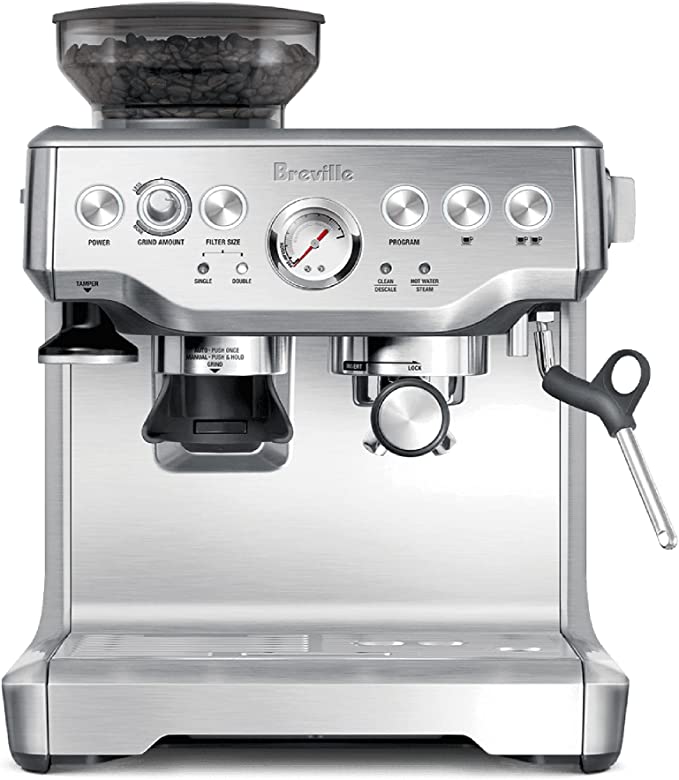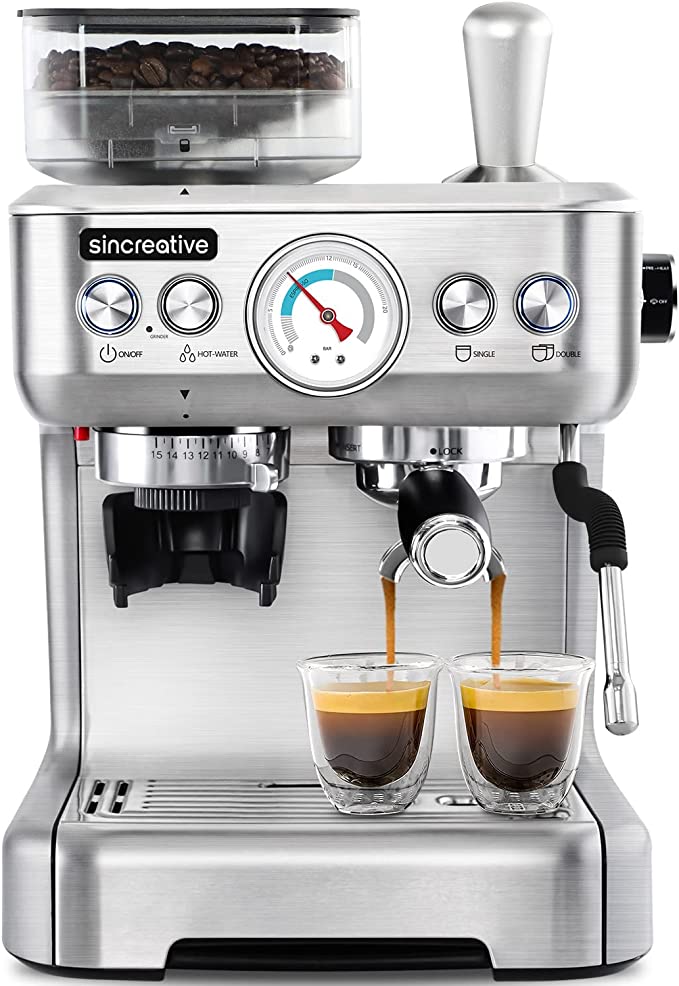MHW-3BOMBER CM8011: Mastering the Art of Espresso, Anywhere
Update on June 9, 2025, 4:31 p.m.
The world hums with a low, constant vibration of automation. Our lights turn on with a word, our cars drive themselves, and our coffee often arrives from a pod with a single, unthinking press. Yet, in the quiet corners of the morning, a different kind of ritual is making a profound return. It begins not with a hum, but with the satisfying heft of solid metal, the crisp sound of beans shattering in a grinder, and the rich, earthy aroma that follows. It’s a deliberate dance of mechanics and senses, a communion with a machine that asks for your strength and focus in return for something extraordinary. This is the world of manual espresso, a domain where physics, chemistry, and human touch converge in a single, concentrated ounce of liquid.
This pursuit of a perfect, hands-on coffee experience is not a new phenomenon. In fact, it’s a return to the very origins of espresso itself, a story born not of leisure, but of the relentless pace of the Industrial Revolution. In the bustling cafes of 19th-century Europe, brewing coffee was a slow, cumbersome affair. Inventors across the continent, like Turin’s Angelo Moriondo, tinkered with steam-powered contraptions to serve impatient customers faster. Their machines were marvels of brass and steam, but they often produced a beverage that was scorched and bitter, a brute-force solution to a delicate problem. The soul of the coffee was being sacrificed for speed.
The revolution arrived quietly, after the dust of another World War had settled. It came from a Milanese café owner named Achille Gaggia. He understood that the problem wasn’t just about heat and water, but about a force of nature that had yet to be properly tamed: pressure. In 1947, he patented a device that replaced massive steam boilers with a brilliantly simple idea: a spring-loaded piston activated by a hand-pulled lever. When the barista pulled the lever, they were tensioning a spring; upon release, this spring drove a piston, forcing a small amount of hot water through the coffee grounds under immense pressure.
Gaggia’s invention did more than just make a better, faster coffee. It revealed something hidden within the bean, something no one had consistently seen before. Atop his espresso floated a thick, reddish-brown, persistent foam. Early patrons were suspicious of this “scum,” until Gaggia, a master marketer, rebranded it as caffè crema—the coffee of such quality that it produced its own cream. He had, by a stroke of mechanical genius, stumbled upon the soul of modern espresso.

The Science of a Golden Veil
That beautiful layer of crema is not just a cosmetic flourish; it’s a complex feat of physics and chemistry, a signature that can only be forged under intense pressure. The gold standard, established by Gaggia’s invention and confirmed by decades of science, is approximately nine bars of atmospheric pressure. This is a staggering amount of force—equivalent to the pressure found 90 meters (300 feet) beneath the ocean’s surface.
Why this specific number? At 9 bars, the hot water doesn’t just seep through the coffee; it violently emulsifies the natural oils within the roasted beans. An emulsion is a stable mixture of two liquids that don’t normally mix, like oil and vinegar in a salad dressing. In the case of crema, it’s a colloidal suspension of microscopic coffee oils and CO2 bubbles within the water. This high pressure is essential to shatter the oils into particles small enough to remain suspended, creating the viscous texture and sealing in the volatile aromatic compounds that would otherwise escape. Pulling a shot of espresso is, in essence, performing a high-pressure chemical extraction and creating a stable emulsion in under 30 seconds.

The Modern Dance of Control
Today, this legacy of control is embodied in machines like the MHW-3BOMBER CM8011. It is a direct inheritor of Gaggia’s mechanical philosophy, stripped to its essential, non-electric core. To engage with it is to step into the role of the barista-scientist, conducting a delicate experiment where every input matters. The process becomes a tactile dance, a conversation with the machine.
The lead in this dance is the lever. As you apply force, you are not just pulling a handle; you are becoming part of a hydraulic system governed by Pascal’s Law. The force you exert is multiplied and transmitted through the water, allowing you to directly feel the resistance of the coffee puck. This opens the door to “pressure profiling”—the art of varying the pressure throughout the shot. Perhaps you start with a gentle, low-pressure pre-infusion, then ramp up to a steady 9 bars, and finally let the pressure taper off to reduce bitterness at the end. This is a level of nuance that a one-button machine, with its fixed pump cycle, can never offer. It’s the difference between a musician playing a single note and performing a symphony.
If the lever is the conversation, the mechanical pressure gauge is the universal translator. Its needle, likely driven by an internal Bourdon tube that straightens under pressure, turns your physical effort into hard data. It transforms intuition into a repeatable method, allowing you to hit your marks, shot after shot, and diagnose problems with scientific clarity.

Before the main performance, there is the gentle prelude of pre-infusion. By allowing a small amount of low-pressure water to saturate the grounds, you are initiating a crucial chemical event. The coffee “blooms,” releasing trapped CO2 and swelling into a uniform, stable puck. This simple step is the primary defense against “channeling,” the bane of all baristas, where water punches pathways of least resistance through the grounds, leading to a disastrously uneven extraction.
The final piece of this interactive puzzle is the bottomless portafilter. By exposing the filter basket, it provides a raw, unedited view of the extraction’s success. It is a mirror reflecting the quality of your dance. A perfect shot emerges as uniform, syrupy droplets that coalesce into a single, beautiful cone of liquid, often displaying mesmerizing “tiger stripes” of dark and light crema. Any spurting or unevenness is an instant, clear diagnosis that your technique—your grind, your distribution, your tamping—needs adjustment. It is the ultimate tool for learning, a direct window into the fluid dynamics you are attempting to command.

The Unplugged Philosophy
In a world that constantly pushes us toward passive consumption, the act of making manual espresso is a quiet rebellion. It demands your presence, your focus, and your patience. It forces you to engage with the physical world—the weight of the tamper, the resistance of the lever, the temperature of the metal. There is no background process; you are the process.
This is more than just making coffee. It’s a form of applied mindfulness, a practical ritual where you harness the fundamental laws of science to create a moment of beauty. The satisfaction comes not just from the final product, but from the entire arc of the endeavor: the understanding, the effort, the control, and the intimate connection between your actions and the result.

When you finally lift the small cup, the rich aroma that greets you is more than just roasted beans. It’s the scent of history, from the first steam-powered contraptions of Turin to Gaggia’s Milanese revolution. The crema that coats your palate is a testament to the laws of physics you just commanded. And the complex, layered taste is the direct, delicious consequence of a dance you chose to lead. In that single ounce, you are tasting the profound reward of taking back control, one perfect shot at a time.







































